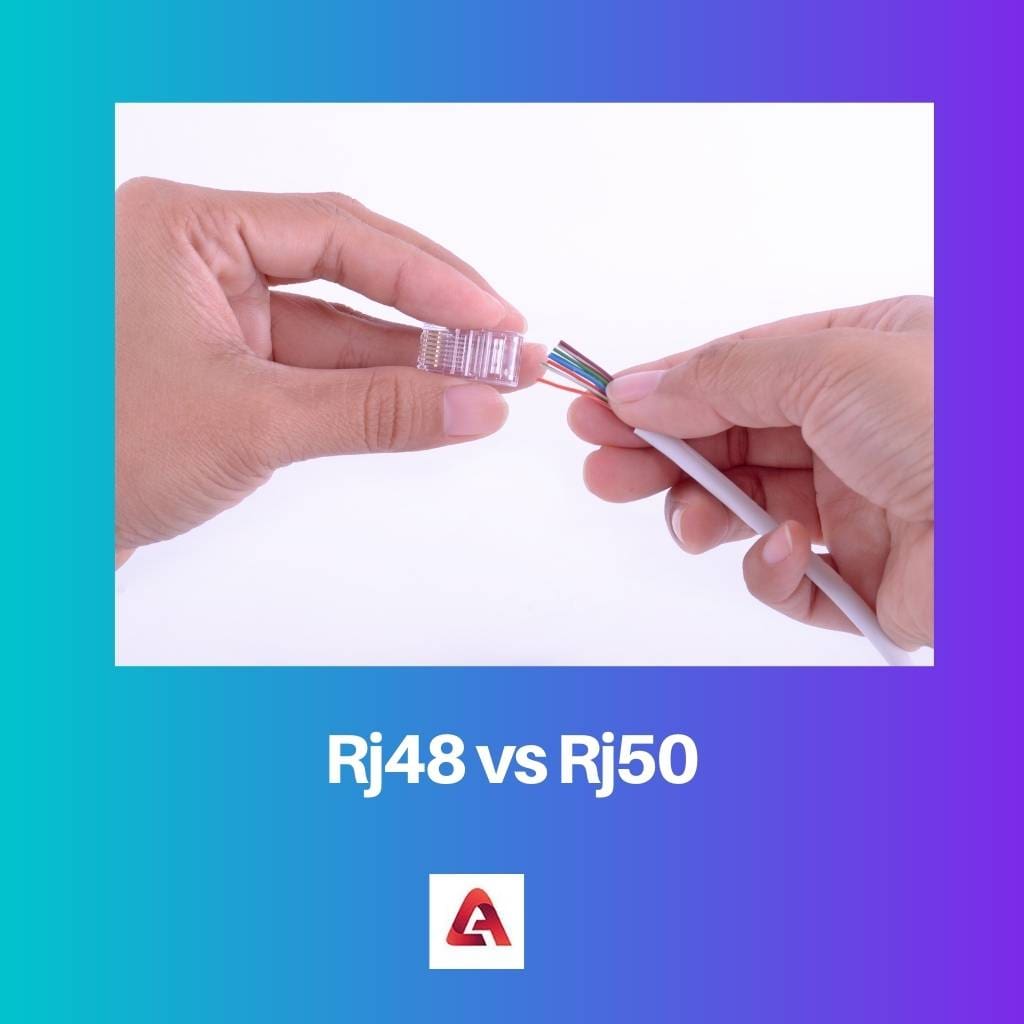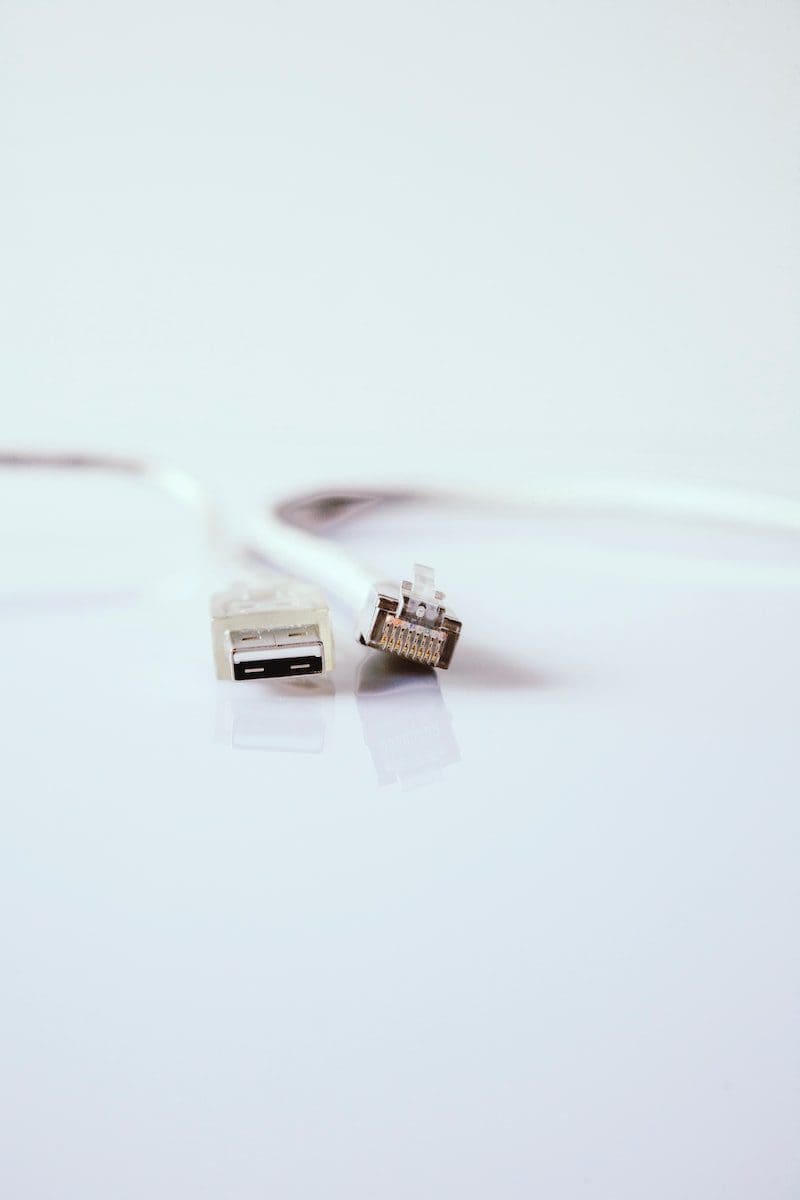Registered Jacks are abbreviated as Rj, and the number is assigned per its physical characteristics. Bell Laboratories first discovered these in 1973.
Registered jacks have many telecommunication applications; they connect transmission local area networks with the customer’s device.
These cables and connectors are becoming obsolete due to the increased use of wireless connections. There are many kinds of connectors with varying numbers of pins.
Key Takeaways
- RJ48 and RJ50 are connectors used for digital communication, but RJ48 has ten pins, while RJ50 has ten pins with an additional keying slot.
- RJ48 is used for T1 and E1 lines, while RJ50 is used for ISDN lines and high-speed digital communication.
- RJ48 supports data transmission rates up to 2.048 Mbps, while RJ50 supports data rates up to 10 Gbps.
Rj48 vs Rj50
The Rj48 is an 8P8C configuration, meaning the connector has 8 positions and 8 contacts.

Rj48 is a long rectangular connector with dimensions 0.3*15.6*0.63 cm and a weight of approximately 299 gm. It has copper pins, which are coated with gold to prevent rusting.
Rj50 is also a long rectangular and transparent modular connector having a dimension of 12*1.27*1.6 cm and a weight of approximately 136 gm. It has copper pins, which are coated with gold to prevent rusting.
Comparison Table
| Parameters of Comparison | Rj48 | Rj50 |
|---|---|---|
| Physical appearance | Clear appearance and long, have copper contact pins coated with gold. | Long and rectangular, they have phosphor bronze pins coated with gold. |
| Configuration | 8P8C | 10P10C |
| Application | LAN, T1 data lines, telephone connections, etc. | Bar Code Systems, Test equipment, computer accessories, etc. |
| Accepted Cables | Twisted wire pair of cables | Solid or Stranded wires |
| Cost | Cheaper to Rj50 | Costlier to Rj48 |
What is Rj48?
Rj48 is a modular connector. It has an 8P8C configuration, meaning that this modular connector has 8 positions and 8 connection points.
It has copper pins, which are coated with gold to prevent rusting. This connector uses pins 1, 2, 4, and 5 to transmit and receive data.
These connectors are attached to cables on two ends and are used for data transfer from the provider to the consumer. The most common use of Rj48 is in T1 data lines and Local Area Networks.
This connector has 2 pins to transmit the signal, 2 pins to receive signals, 2 pins to drain the signal, and the remaining 2 pins to be unused.
This connector cable is more popular due to its extensive use in networking. Most of the Ethernet cables have these crimped on both sides.

What is Rj50?
Rj50 is a modular connector. It has a configuration of 10P10C, meaning it is a modular connector with 10 positions and 10 connection points.
It has a contact material of phosphor bronze pins covered with gold to prevent rusting and has high durability and data connection speed. It has a broader application in comparison to Rj48.
This connector mainly accepts solid or stranded wires. It has a wire gauge range of 24 AWG – 26 AWG.
It has a rated current of 1.5A and a voltage of 1000 v. These connectors have a vast and unique application in bar code systems.

Main Differences Between Rj48 and Rj50
- Rj48 has an 8P8C configuration, whereas Rj50 has a 10P10C design.
- The contact pins of Rj48 are made of copper, and the contact pins of Rj50 are made of phosphor bronze.
- Rj48 can accommodate 8 wires at a time, whereas Rj50 can accommodate 10 wires at a time.
- Rj48 is mainly used with Shielded Twisted Pair cables (STP), whereas the Rj50 mainly accepts stranded or solid wires.
- It has main applications in T1 data connections, Local Area Networking (LAN), etc., and the Rj50’s primary usage is in bar code systems and test equipment.
- Rj50 is costlier than Rj48.
- Rj48 is more popular and has a higher amount of applications than Rj50.
- https://peer.asee.org/8270.pdf
- https://books.google.com/books?hl=en&lr=&id=mU6rEYyaHBkC&oi=fnd&pg=PR5&dq=registered+jack+networking&ots=cfEGqNZzy4&sig=1YLfe_5aPQZnE76Axdd–7mMh1Q
- https://books.google.com/books?hl=en&lr=&id=3APTxiqamVYC&oi=fnd&pg=PA27&dq=registered+jack+networking&ots=sLrw7vEJfu&sig=usvdiFBU08MMjkrQ4OLvS9m-qCw





